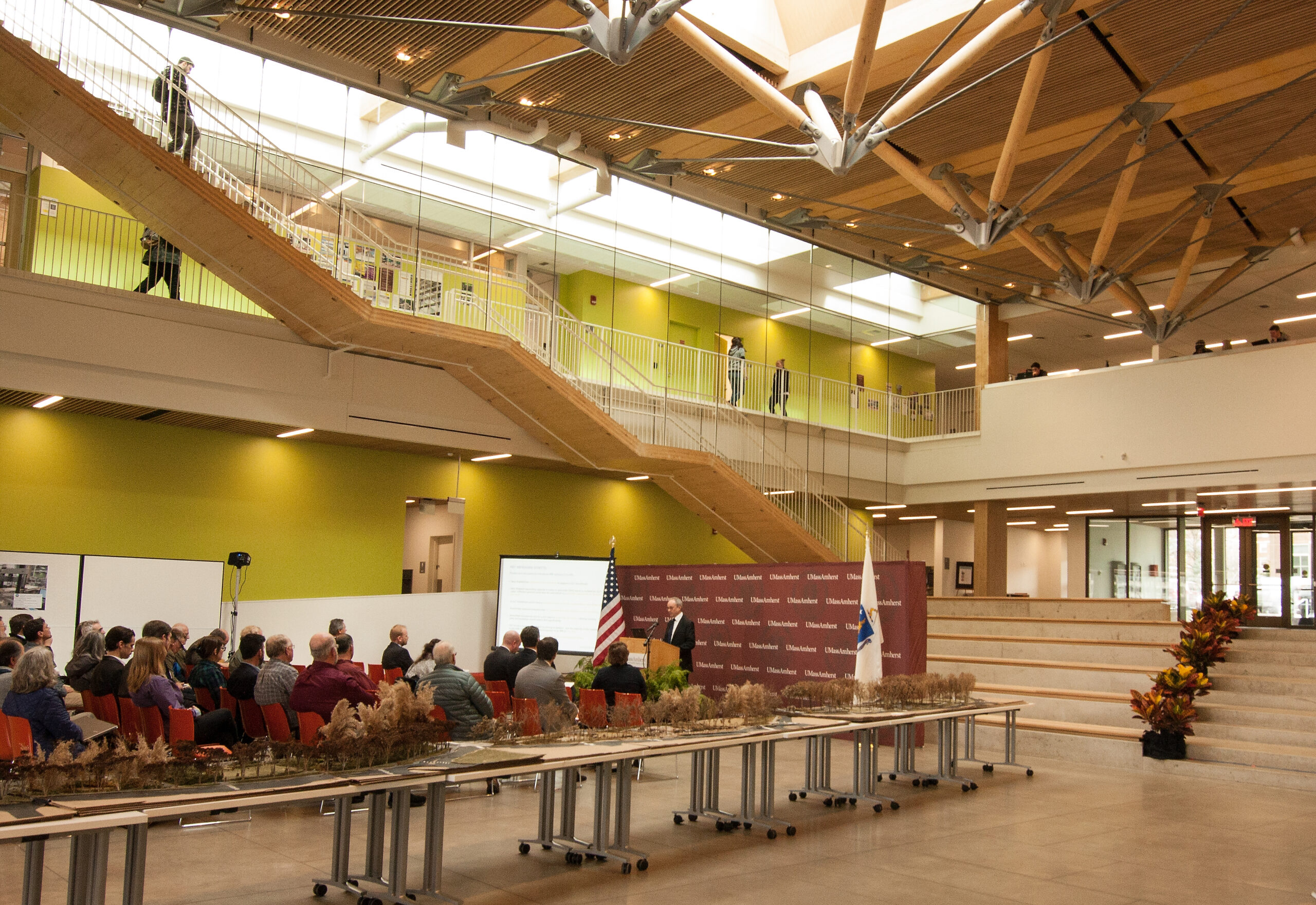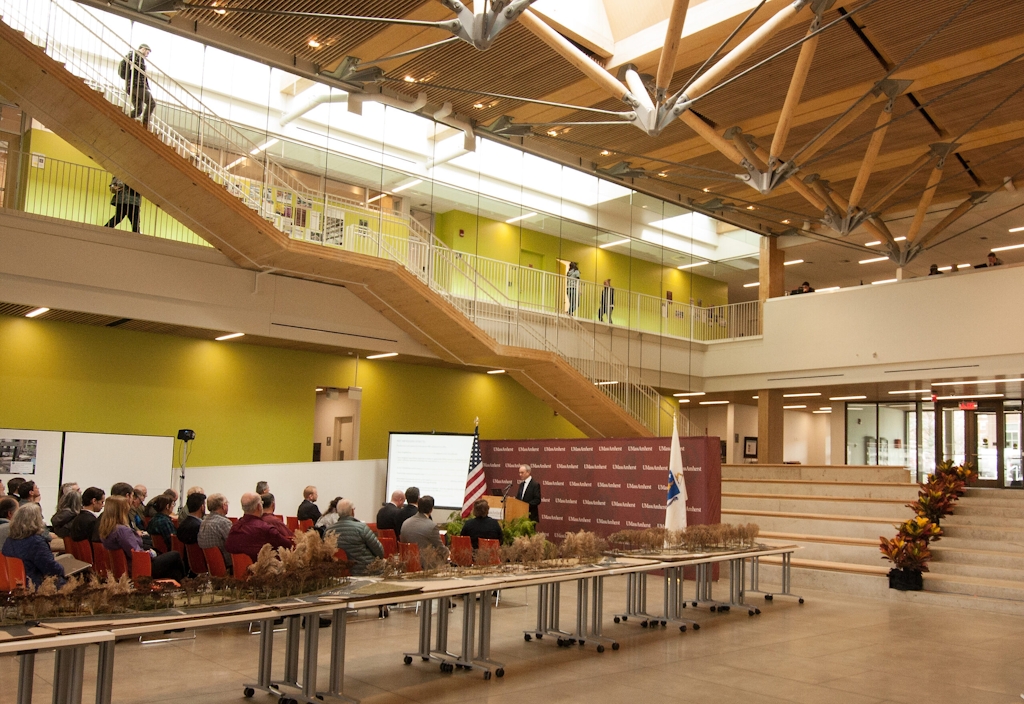In April 2017, the New England Forestry Foundation released a report through its Build It With Wood program regarding the viability of engineered wood or “mass timber” products, particularly cross-laminated timber (CLT), in New England. The study was supported by the USDA Forest Service’s Wood Innovations Program and the research was conducted by a Finnish consulting firm, Pöyry. The report and its results were originally presented at the University of Massachusetts, Amherst, and later at the University of Maine. The report focused on two main questions:
Is there a market for wood engineering in New England?
Are there tree species in New England that would be good for wood construction and cross-laminated timber?
The results of the study yielded positive results for both of these questions. One particular product, cross-laminated timber (CLT), would fit in new construction markets, and New England forests have multiple wood species that proved to be viable for CLT (including spruce, fir, white pine, and hemlock.)
Cross-laminated timber is drastically different from timber typically used in home construction. CLT is an engineered wood product composed of three to seven layers of large, crisscrossed, glued pieces of lumber. CLT is strong, while not being as heavy as steel or concrete. CLT is also fire resistant, and cuts on-site construction time. Additionally, CLT has a number of environmental benefits. Using wood in buildings sequesters carbon, whereas steel or concrete require processes that produce carbon. When used in New England, CLT would emphasize local tree species, and symbolize bringing the forest into the city.

(Photo Credit: Charlie Reinertsen)
Pöyry found that, since CLT is used in very different applications from single home wood construction, there would be room for this product in new markets. Some of these markets include multi-family apartment buildings and commercial mid- to high-rise construction. The study also found that New England could support one or two mills for CLT construction, allowing the region to become competitive in the global CLT market.



